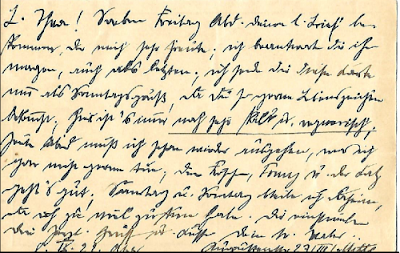Following on from meeting places being called Tabernacles (e.g. Brooklyn Tabernacle, London Tabernacle) it was easy to see why some large halls would be called Temples in the Bible Student world. So there was the New York City Temple, where the Photodrama of Creation was shown in New York. However, probably the most famous of all was the Chicago City Temple (formerly the old Globe Theater), which again was used for the Photodrama.
The Chicago class
produced a special brochure entitled Our
Temple, which is highly collectable today. It shows how the Photodrama
presentation worked, and as a bonus had a photograph from the first Bible
Student convention held in Chicago in1893. It also contained numerous portrait
photographs of men and women who were involved in the Photodrama work; in many
cases these are the only photographs that have survived of some of these
individuals. If you visited the Chicago Temple you would likely
Albert Edward Franz (1889-1940)
As a link with more
recent times, his younger brother, Fred Franz, was president of the Watchtower
Sociery from 1977-1992.
The Temple was only
used by Bible Students for a short time. The Chicago class grew to about 600 in
1914. They first hired the Auditorium Theater in Chicago to show the Photodrama
in April-May of that year, while looking for a more permanent location. They
then obtained a lease on the Old Globe Theater (which was origionally built to
exhibit the Panorama of the Battle of Gettysburg) and after much work
redecorating opened for business as the Temple later in 1914. There is an
article in the St Paul Enterprise for
October 16, 1914, showing it to be up and running then. As well as a theater it
included a book room, library, dining room, and accommodation for the workers.
The address was 700 South Wabash Avenue, near 7th Street.
However, an internet
search shows that this building became the Strand Theater in May 1915, so it
wasn’t used by the Bible Students for very long at all. When a new film for
Bible Students called “Restitution” came to town in 1918, they were back in the
Auditorium Theater. The former Chicago Temple was demolished in 1921.
In that window of
operation the Temple sold postcards, and one is reproduced below from Tom’s
collection. It was mailed on November 13, 1914.
Whatever connection with the Bible Student movement there may have been with this particular postcard is sadly lost in time.

















